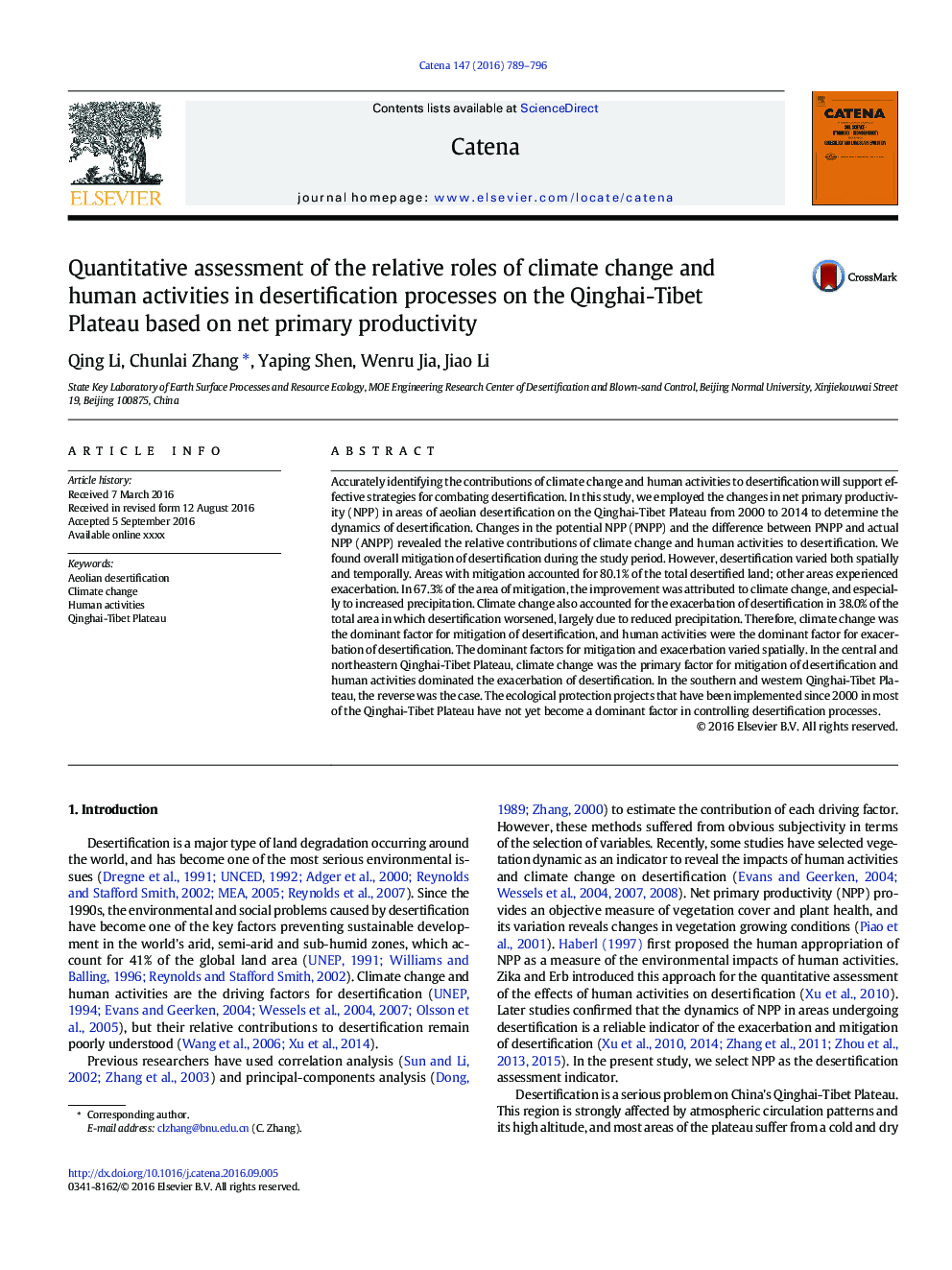| Article ID | Journal | Published Year | Pages | File Type |
|---|---|---|---|---|
| 6407817 | CATENA | 2016 | 8 Pages |
Abstract
Accurately identifying the contributions of climate change and human activities to desertification will support effective strategies for combating desertification. In this study, we employed the changes in net primary productivity (NPP) in areas of aeolian desertification on the Qinghai-Tibet Plateau from 2000 to 2014 to determine the dynamics of desertification. Changes in the potential NPP (PNPP) and the difference between PNPP and actual NPP (ANPP) revealed the relative contributions of climate change and human activities to desertification. We found overall mitigation of desertification during the study period. However, desertification varied both spatially and temporally. Areas with mitigation accounted for 80.1% of the total desertified land; other areas experienced exacerbation. In 67.3% of the area of mitigation, the improvement was attributed to climate change, and especially to increased precipitation. Climate change also accounted for the exacerbation of desertification in 38.0% of the total area in which desertification worsened, largely due to reduced precipitation. Therefore, climate change was the dominant factor for mitigation of desertification, and human activities were the dominant factor for exacerbation of desertification. The dominant factors for mitigation and exacerbation varied spatially. In the central and northeastern Qinghai-Tibet Plateau, climate change was the primary factor for mitigation of desertification and human activities dominated the exacerbation of desertification. In the southern and western Qinghai-Tibet Plateau, the reverse was the case. The ecological protection projects that have been implemented since 2000 in most of the Qinghai-Tibet Plateau have not yet become a dominant factor in controlling desertification processes.
Related Topics
Physical Sciences and Engineering
Earth and Planetary Sciences
Earth-Surface Processes
Authors
Qing Li, Chunlai Zhang, Yaping Shen, Wenru Jia, Jiao Li,
